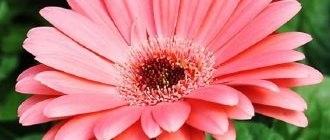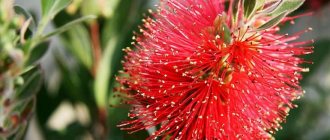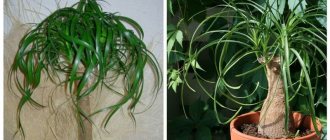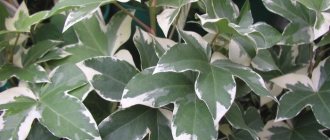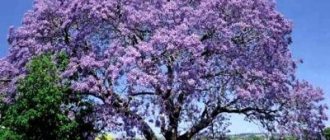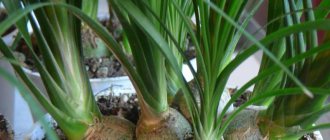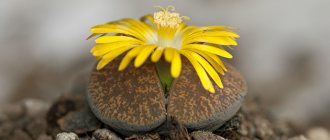Achimenes is a beautiful flowering plant from the Gesneriaceae family. Under natural conditions it occurs as a vine or shrub .
Achimenes is native to the tropical zones of Central and South America. A flower accustomed to a hot, humid climate is afraid of a drop in temperature. This is evidenced even by its name, which goes back to Greek roots and means “afraid of the cold.” Achimenes is developing intensively. It is quite easy to grow it at home. A bush up to 60 cm high can be formed in one growing season. The perennial plant blooms in waves, forming velvety, bright bells from June to September. After this, the aboveground part dies, and in the spring it is reborn from the rhizome.
Be sure to pay attention to such wonderful plants as Columnaea and Saintpaulia.
| Achimenes is developing intensively. |
| It blooms in waves, forming velvety bright bells from June to September. |
| The plant is easy to grow, there are some minor difficulties. |
| The plant dies back every fall and grows back in the spring from old rhizomes. |
Beneficial properties and toxicity of Achimenes
Achimenes.
Photo Achimenes pleases the eye not only with bright bell-like flowers, but also with serrated velvety leaves. Their front side is bright green, and the bottom has a reddish tint. Contemplating original flowers against a background of lush greenery brings incomparable pleasure. Lush bushes in hanging flowerpots decorate the interior. Achimenes is a non-poisonous plant that does not cause allergies or irritation. Therefore, you can safely grow it at home.
How Achimenes rhizomes wake up, how to wake them up
They usually wake up on their own when spring approaches. Therefore, it is necessary to inspect the plants every other day so as not to miss the young shoots emerging from the ground. As soon as the spouts of the sprouts appear, you need to update the top layer of soil. The new substrate is purchased at a flower shop and labeled “For flowering plants.” After this, the plant is placed in its usual place indoors and cultivated in the usual way.
Experienced flower growers advise removing them completely from the ground for inspection before waking up the rhizomes. This method allows you to remove everything dry or rotten that is in the ground, and transplant the viable parts into completely nutritious soil, and wait for sprouts. This method helps:
- Inspect and remove damaged copies.
- If there is a large quantity, divide the flower into two copies.
- Place closer to the surface to facilitate germination.
In some cases, the rhizome does not wake up and in order to germinate rhizomes, you need to follow these recommendations:
- bring them into a room with a temperature of 25°C;
- pour moderately with warm water heated to 60°.
Caring for Achimenes at home. Briefly
A tropical plant, Achimenes, can be grown at home by a beginner, having familiarized itself in advance with the preferences of the flower:
| Temperature | The rest period is + 13 - 15°C, the rest of the time - about + 20°C. |
| Air humidity | More than 50%; you cannot spray the plant; placed on a tray with wet pebbles. |
| Lighting | Bright diffused; shade on windows facing south; on windows on the north side it will develop slowly. |
| Watering | The soil must be moist; During flowering, water every 3 days. |
| Priming | A self-prepared mixture of equal doses of humus, peat, sand or a ready-made substrate for Saintpaulia. |
| Feeding and fertilizer | With diluted liquid fertilizer: at the beginning of March - once every 1.5 months; during active growth - 4 times a month. |
| Transfer | Annually. |
| Reproduction | By seeds, rooting cuttings, dividing the bush. |
| Features of cultivation | The plant has adapted to life indoors, but it is important to observe some of the peculiarities of growing Achimenes in order to create comfortable conditions for it. Achimenes needs a period of rest and expresses this by losing its aerial part. In summer, a flower planted in a hanging container feels great outdoors (the place should be bright and protected from drafts). If you pinch the tops of the shoots several times, you can form a beautiful spherical bush. |
Subtleties of pinching and pinching
And now - the most interesting part. How to form a bush so that during flowering you can’t take your eyes off it. At the very early stages of Achimenes growth, we begin to form the plant by pinching it.
When the plant grows 2-3 pairs of leaves, we remove the crown with nail scissors - this is tweezing. We don’t throw away the tops - they, along with the rhizome plants, will give rise to new bushes and will have time to grow a bush no smaller than the rhizome plants. Propagation by pincer crowns is an easy and reliable way to propagate Achimenes.
In a small plastic cup with drainage (you can break the foam) and soil, we place these tops the size of a match head.
We press the tops of the heads a little into the ground, lightly spray them with a spray bottle, put them in a zip-lock bag and place them under additional lighting. After 10 days, the cuttings grow - this is a sign of rooting.
After 10 days, the plant whose crown was pinched already produces two shoots, but in general there can be 3 or even 4. We repeat pinching. These tops can also be rooted. So I pinch the plant from 4 to 7 times until the buds appear.
Here are the formed achimenes, ready to bloom
The pinning, of course, will delay flowering by a week or a week and a half, sometimes by 20 days, but then it will be so gorgeous, you will understand that it is worth it!
I pinch all varieties indiscriminately. The only variety, Ambroise Vershaffelt, does not bush well after pinching; it does not need to be pinched.
Caring for Achimenes at home. Details
Homemade achimenes will delight you with abundant and long-lasting flowering for many years if you surround it with care.
Achimenes flowering
The long, beautiful flowering of Achimenes is one of its brightest advantages. From the end of May to the beginning of November, velvety delicate flowers, similar to bells, appear against the background of green pubescent foliage .
They can be small (up to 3 cm), medium (almost 4 cm) and large (almost 5 cm); simple or terry.
Under natural conditions, violet-colored Achimenes is found. Flowers of different colors are grown in the culture. In the first half of summer, Achimenes blooms more profusely. The flowers fall quickly, but new ones form immediately.
Therefore, the bush always looks elegant. Insufficiently abundant flowering can be caused by:
- excess nitrogen fertilizers;
- lack of light;
- late awakening from hibernation;
- fungal disease.
To help the plant cope with such difficulties, it is moved to a brighter place; fertilize with potassium-phosphorus fertilizer; treated with fungicide, if necessary.
Temperature
In winter, during the dormant period, Achimenes is kept at + 13 - 15 ° C, the rest of the time - at + 20 ° C. Caring for achimenes at home requires observance of this temperature regime. If it is hot in summer (from + 28°C), the color of the flowers may suddenly change and their size will decrease.
A winter increase in temperature will provoke an early awakening of the buds, and shoots will begin to appear ahead of time.
Spraying
All plants of the Gesneriaceae family love high air humidity, more than 50%. In this case, spraying the plant is unacceptable. You can only spray the air around the achimenes if it is not blooming at this time. To increase humidity, place the flower pot on a tray with wet pebbles or use a humidifier. If during watering droplets of water accidentally fall on the leaves, they should be blotted immediately with a clean napkin.
Lighting
The plant is suitable for bright, diffused lighting . On a south-facing window, the achimenes are shaded so that the aggressive rays of the sun do not cause burns. On windows on the north side the flower will be weak and elongated due to lack of light. The Achimenes flower grows well at home on windows facing east and west.
Watering
The substrate must be kept moist. During the flowering period, Achimenes is watered at home once every 3 days with settled lukewarm water .
It is necessary to water evenly and carefully, without spilling water on the leaves. Experienced flower growers use wick irrigation.
Water is poured out of the pan. In winter, Achimenes is not watered, only sometimes the soil is sprayed.
Achimenes pot
The root system of Achimenes is located in the upper part of the substrate, without penetrating deeper. Therefore, the pot for achimenes is chosen to be wide and low. If Achimenes is grown as an ampelous plant, a hanging flowerpot is perfect, from the edges of which green shoots with bright bell-shaped flowers will descend in a beautiful cascade. Whatever pot you choose for achimenes, drainage holes should be made at the bottom to prevent moisture stagnation.
Soil for Achimenes
Achimenes needs a loose nutrient substrate that has a slightly acidic reaction. You can prepare the soil for achimenes at home yourself by taking equal parts of peat, sand (perlite) and humus (you can add leaf soil to the mixture in the same amount). The prepared soil is mixed well and fried or frozen a day before planting. You can buy substrate for Saintpaulia in the store. Crushed moss, brick chips and coal powder are added to the soil.
Feeding and fertilizer
To strengthen the immunity of Achimenes and make it more decorative, fertilize and fertilize it with a special solution for Gesneriaceae or a universal remedy for indoor flowers. They can be alternated with fertilizer for beautifully flowering plants, containing large quantities of phosphorus and potassium.
At the beginning of spring, when the first shoots form, feed once every 10 days. During the growing season - from mid-April to mid-October - every 7 days. After evening watering, Achimenes is “treated” to any diluted liquid fertilizer.
Transplantation of Achimenes
Achimenes is replanted every year, starting in the second half of February, when the flower begins to wake up from hibernation.
The rhizome is removed from the substrate and damaged fragments are removed. A drainage layer is poured onto the bottom of the pot, and prepared soil is placed on it. Make a small depression and place rhizomes (nodules) there. Water from below so as not to bury it. Sprinkle soil on top (1.5 cm). In 2 weeks, shoots will appear. At the same time, Achimenes was fed for the first time.
If the plant has grown during the season, it is carefully transferred to another pot. It is better to do this before Achimenes begins to prepare for hibernation - before the second half of August.
How to prune achimenes?
The main way to form a beautiful, abundantly flowering bush is to prune it. The procedure is carried out for the first time when Achimenes begins the growing season, and the last time - during the appearance of buds - in early May. Trimming the tips of branches leads to the formation of new shoots. The more pairs of leaves are formed, the more fresh buds will appear. The cut pieces can be rooted.
Is it possible to leave Achimenes without care during the holidays?
If you plan to go on vacation in winter or late autumn, there is no need to worry about the flower. It will survive the dry period. If the vacation is scheduled for the summer, then in 2 weeks without watering in the heat you can lose Achimenes. Therefore, the owners need to take care of preserving moisture in the soil before leaving. Unopened buds and some leaves are cut off from the flower so that it evaporates less moisture. Water well and place in a cool, less lit place (on the floor).
It is useful to place a flowerpot with a flower in a large container, place wet sphagnum in the spaces between the walls, place the entire structure on a tray with wet pebbles (so that water from the tray does not flood the soil in the flowerpot through the drainage hole). You can water the plant using wicks.
Achimenes in winter. Rest period
Achimenes are kept in special conditions in winter. The dormant period can last up to six months (this depends on storage conditions and the type of flower). After flowering, watering is reduced to a minimum. The above-ground part must dry out, only then is it removed, and the rhizomes (roots) are placed for the winter at + 9 - 17 ° C. They are not removed from the pot, they are transferred to a shaded, cool room and sometimes the soil is sprayed.
You can place the rhizomes in a perforated plastic bag with sphagnum moss or sand (you can add a powdered fungicide to them). In the second half of February, the roots begin to sprout. If this happened earlier, they are removed to a colder place. If rhizomes, on the contrary, need to be awakened, the bag with them is placed closer to the heat.
How to store
It is clear from Achimenes that he is about to go into the dormant stage if:
- the budding stage ends;
- the green mass no longer grows;
- the lower tier of leaves withers and crumbles;
- the soil requires less moisture, since the plant consumes less water.
If the bush itself begins to prepare for the dormant period, then the grower reduces watering so as not to flood the plant. This is done so that the rhizomes of Achimenes ripen and can survive the winter. If the difference between day and night temperatures is only 5°, then stop watering the bush altogether.
In order for the rhizomes to better survive the winter, you need to wait until the bush dries out completely before digging them up. This will indicate that the bush is ready for winter.
In a pot
Depending on how many pots of plants the grower has, he can store them in the ground. To do this, you need to remove all the dry parts of the plant, and move the container to a cool room, where it will be cool and dry in winter.
The temperature in the storage area should not fall below 10° C and not rise above 18°, as this will provoke Achimenes rhizomes to awaken prematurely. Lighting in the storage area is not a necessary factor. But it is impossible to fertilize and water, since the roots are dormant, and moisture in the ground will lead to their rotting. The rhizome of an adult plant is stored in this form.
If this is a young specimen, then the rhizomes are very small, so the plant will not survive a completely cold winter.
Therefore, the container with the young specimen is left in the apartment and slightly moistened during the winter. A bathroom is good if it does not have radiators. In this case, the container is placed under the bath, where it is cool and humid. But from time to time you need to take out the container, and if sprouts appear, then move it to a bright room.
Outside the pot
If the collection of plants is large enough, then storing all the rhizomes in pots is very troublesome and there may not be enough space in a cool room. Therefore, when the plant dries out completely, the following measures must be taken:
- Remove it from the ground.
- Free the rhizome completely from the soil.
- Sort through and keep only healthy specimens for storage.
- Dry.
If the specimens are affected by rot, the diseased parts are cut out and treated with an appropriate fungicide. When the rhizome is ready for storage, that is, processed and dried, it is laid out in sealed bags and sprinkled with perlite. After which you need to sign the packages so that you know which variety is stored where. Then everything is put in one layer in a box or paper box and sent for storage in the basement.
If condensation appears in the bags, they must be opened and the rhizome dried. If this is not done, premature growth may begin.
Reproduction of Achimenes
Reproduction of Achimenes, like all Gesnerievs, is possible in different ways, but two are more often used.
Growing Achimenes from seeds
Long way to bloom. At the end of February, fresh seeds are sown superficially. After spraying the soil, the container is covered with film (it is removed for watering and ventilating the seedlings). When shoots appear after 2.5 weeks, the film is removed. When 3 leaves are formed, the seedlings are planted in separate pots. Achimenes will bloom in a year.
Propagation of Achimenes by cuttings
A popular option for propagating rare species. A cutting of at least 5 cm in length is cut from the tops. The lower leaves are removed and placed in warm water with the addition of charcoal powder. In the light, the roots will appear after about 10 days. The rooted cuttings are planted in the ground. Can be propagated by leaf cuttings. The leaf is placed in moistened soil and covered with film. When the roots appear, they are planted in a separate pot. After a few months, the pot is changed to a larger one. If buds appear in the first year, they must be cut off: the task of achimenes at this time is the formation of rhizomes.
Seed propagation leads to the loss of varietal originality of the plant, so it is rarely used.
Soil composition and requirements for propagation vessels
Achimenes are unpretentious, but for the rapid development of the root system, light soil is needed. Therefore, you can use an ordinary substrate for seedlings of garden plants, plant cuttings in peat pots or root them in special mixtures. The main condition will be mandatory soil disinfection in one way or another.
For primary germination, it is recommended to use a mineral composition of vermiculite, perlite and peat. And for a developed root system, soils based on humus, leaf soil and sand are used, with the addition of superphosphate for the development of the root system. It is important to have a good drainage layer so that the water does not stagnate when watering. This layer can be sprinkled with crushed eggshells on top.
If new plants are planted in small cups, then the drainage layer in them should not be less than 2-3 cm. For the development of the plant, a surface layer is needed, because the roots of Achimenes develop horizontally under a thin layer of soil.
Diseases and pests
If you carelessly care for a plant, it will be plagued by diseases and pests, as evidenced by unpleasant symptoms:
- spots on the leaves of Achimenes - from watering with cold water or excess sunlight (adjust watering, shade the plant);
- Achimenes flowers quickly fall off - excess light (move to the shade);
- Achimenes is deformed, leaves of Achimenes fall off - damage by pests (insecticides are used);
- Achimenes leaves turn yellow - decreased photosynthesis due to iron deficiency or watering with hard water (feed with fertilizer containing iron; settle water for irrigation, soften with citric acid - 0.2 g per liter of water);
- the leaves are brown and curl - a sharp change in temperature, keeping the plant in a cool, damp room (move to a dry, warm place, protected from drafts and temperature changes).
Achimenes is sometimes affected by pests: aphids, mealybugs, thrips, spider mites.
Other growing problems
To find out what causes problems and how to fix them, first figure out what mistakes were made during care.
If there is excessive humidity, a gray fluffy coating may appear on the flower . To get rid of this problem, you need to place the plant in a warm place, limit watering, remove the top part of the soil and add dry substrate. Lastly, don’t forget to treat the soil with a fungicide.
Due to the lack of nutrients in the soil, Achimenes will not bloom, so the flower must be fed with complex fertilizers.
If you forget to shade the plant from direct sunlight, it will get sunburned, resulting in brown spots on the leaves. To solve the problem, you need to remove the damaged leaves and protect the achimenes from direct sunlight.
If the air is too dry, brown spots will appear on the tips of the leaves. In such a situation, you need to remove the damaged leaves, use a sprayer to freshen the air around the flower and monitor the watering period. In summer it is recommended to ventilate the room 2 times a day.
If you notice curled leaves, then most likely you watered the flower too much. Therefore, it is better to carefully transplant the achimenes into a shallow container and reduce the amount of watering.
Types of Achimenes domestica with photos and names
In the natural environment, up to 50 species of Achimenes are found. It is difficult to count the exact number of varieties bred by breeders. It is known that the Romanian breeder S. Salib alone has more than 200 varieties of Achimenes bred. All hybrid varieties are obtained on the basis of 2 original species:
Achimenes grandiflora
The bush grows up to 65 cm. The edges of the pubescent leaf plate are “decorated” with neat teeth. The lower part has a dark red tint. The length of the leaf reaches 10 cm. In the axils of the leaves, 2 scarlet flowers are formed, with a bag-like swelling at the base of the corolla. Popular hybrids: Paul Arnold (bright pink flowers, bronze leaves) and Little Beauty (carmine-colored flowers).
Long-flowered Achimenes (Achimenes longiflora)
The height of the bush is about 35 cm. Oblong purple flowers are formed 1 at a time in the axils of the leaves. The length of the corolla is up to 5 cm. The pubescent green shoots are weakly branched. The elongated, velvety leaves have serrated edges.
It’s not for nothing that Achimenes is called a magic flower. A large spherical bush or a lush cascade descending along the edges of a hanging flowerpot have enchanting beauty and will not leave anyone indifferent.
Description
Achimenes is native to the tropics of Central and South America, where it grows in two forms - as a vine and a shrub. It belongs to the Gesneriev family and is a relative of gloxinia and violets.
In indoor conditions, Achimenes is a perennial with intensive growth, reaching a height of 30-60 cm. The bush has velvety, pointed leaves with jagged edges. Their front side is dark green, the back side is reddish.
Depending on the variety, the plant can be erect or hanging. The root system is superficial, has rhizomes - cone-shaped formations in which nutrients accumulate. Outwardly, they resemble birch catkins and can vary in color, shape and size.
The bush blooms for quite a long time - from the end of May to the first days of November. The process occurs in waves. At the end of spring, bright bell buds form on the plant. They can be smooth or velvety.
The size of the flowers varies from 2 to 5 cm. In their natural environment, their petals are colored violet. However, thanks to the efforts of breeders, today there are indoor varieties of a wide variety of shades.
After flowering, the above-ground part of the bush dies, and the plant retires - it accumulates strength until spring in order to be reborn from the rhizome.
Planting rhizomes for the first time after purchase
Rhizomes must be planted in March or April; during these months the daylight hours are already long enough, which guarantees a strong and beautiful plant. It is not recommended to shift the planting dates, because then the growth and flowering periods of Achimenes will also shift. Of course, you can plant rhizomes before March, but in this case, in order to get a beautiful plant, you may need additional lighting; without it, the achimenes will be elongated, weak, and flowering will be sparse. Rhizomes planted in May or later will be shifted in the growing season, which will affect the time the plant goes into hibernation and its awakening for the next season, which will occur later. Planting rhizomes at the right time is quite important, since it affects the entire rhythm of Achimenes awakening and going into hibernation. In the future, if you planted rhizomes in the wrong month, it will be very difficult to move the growth and flowering dates, it may take more than 2 years.
It is best to plant rhizomes that have already sprouted - this will guarantee that the plant will not rot if watered heavily. A rhizome ready for planting has a small sprout, the length of the sprout can vary, it can be either a couple of millimeters or more than 2 cm. If your rhizome has sprouts and it is not yet a suitable month for planting, do not worry, they can wait, as a rule up to 1 month. In order to slightly slow down the development of the sprout, it is necessary to lower the temperature of the rhizomes, but it should not be lower than 12 ºC.
Achimenes patens.
The Romanian collector Serge Salib developed a formula for planting rhizomes: 5 rhizomes sit on a pot with a diameter of 16.5 cm. Rhizomes are laid out horizontally on the ground and sprinkled with a 2-3 centimeter layer of soil, depending on their size. If during planting you accidentally break a rhizome sprout, don’t worry, nothing bad happened, the plant will give a new sprout, although the germination time will take a little longer, usually by a week. After planting, you will see the first sprouts of Achimenes in 2-3 weeks. The timing of germination is influenced by both the length of the sprout with which the rhizome was planted (a longer sprout will produce shoots faster) and the temperature of the content (at high temperatures, vegetation occurs faster).
Actions after landing
Several recommendations for actions after planting Achimenes rhizomes:
- If there is only one rhizome, then it is planted in a small glass. And then, as they grow, they increase the capacity.
- Specimens are replanted after wintering until spouts emerge from the ground.
- If the rhizome has sprouted, it can no longer be replanted. You can only carefully transfer it into a large container without destroying the lump of earth.
- If rhizomes do not germinate, this means that they are still in the dormant stage. Therefore, they are awakened by increasing the temperature and warm water.
- If the rhizome has not sprouted, then there is no need to water it intensively. The process of rotting may begin.

